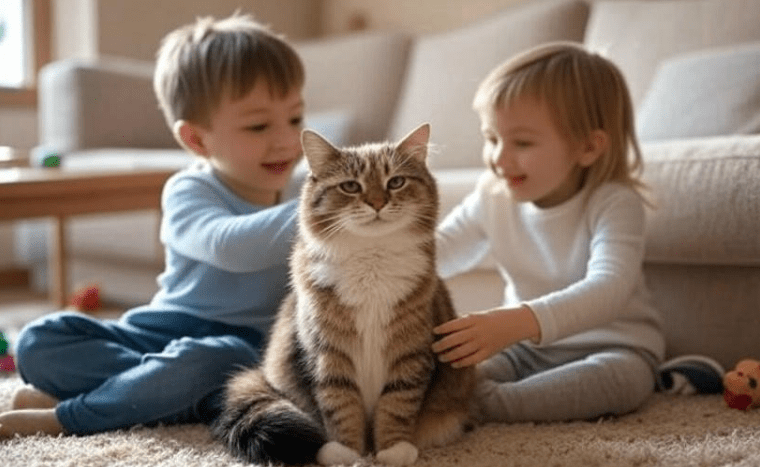
Are Domestic Shorthair Cats Good with Children? Tips for a Safe and Friendly Interaction
Cats form part of many family households because they enjoy playing while making their owners feel calm. Having children requires you to carefully select the best cat type for your home. Pet owners choose Domestic Shorthair cats because these pets have a friendly and flexible nature with families. The key question remains: Are Domestic Shorthair cats good with children? We discuss Domestic Shorthair cat characteristics before deciding if they match family living with children and share tips to bring kids and cats together safely.
Key Takeaways
- Domestic Shorthair cats show natural friendliness and social behaviour.
- You need to determine if your Domestic Shorthair cat matches well with your children.
- Establish proper methods to welcome a Domestic Shorthair cat into your child’s daily life.
- Our article provides important guidelines about securing cat-child moments that preserve their well-being.
- Teach your children to respect their cats and show them how to pet their pets properly.
Table of Contents
ToggleUnderstanding the Friendly and Social Nature of Domestic Shorthair Cats
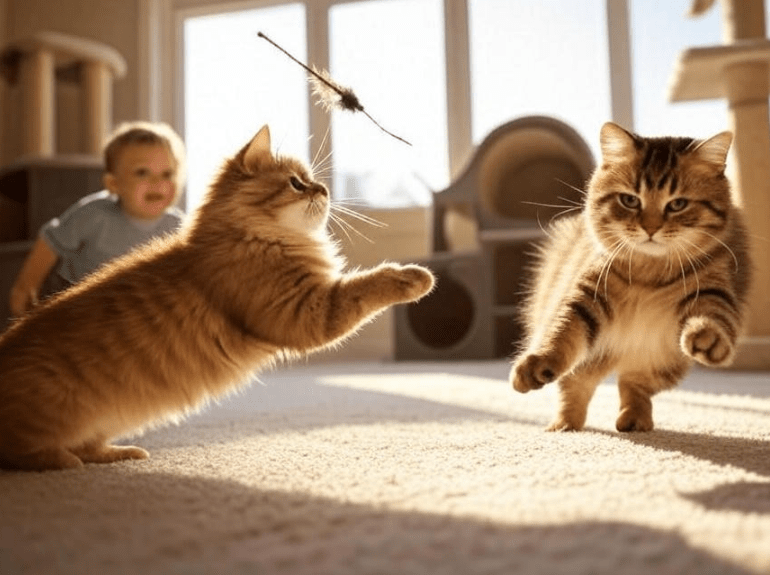
The Domestic Shorthair cat breed has natural social and flexible characteristics. People choose Domestic Shorthairs because their friendly nature and active playfulness matches family life particularly when kids want to interact with pets. Due to their mixed genetic background Domestic Shorthairs display many different physical traits and personality types which make them available in various colours, patterns and behaviours. Their easy going temperament and friendly nature match perfectly with young children in a home.
These animals are friendly toward human contact and want to spend time with family members. Most cat breeds are not as independent as others so they naturally look for personal attention and activities to share with their human companions. The Domestic Shorthair cat type fits better in busy homes that include children especially after receiving proper socialisation training.
Their natural instinct to play attracts children who enjoy exploring cat behaviour together. When playing with their kittens they follow moving toys and pounce just like hunting while they love to hide and surprise their child in search games. Their friendly nature enables them to bond with family quickly and develop lasting connexions with children that become their friends.
How to Assess if Your Domestic Shorthair Cat is a Good Fit for Your Children
Even though Domestic Shorthair cats are known for their welcoming personality each one shows distinct behavioural traits specific to them. Check these key elements to verify if your Domestic Shorthair cat suits your children’s needs.
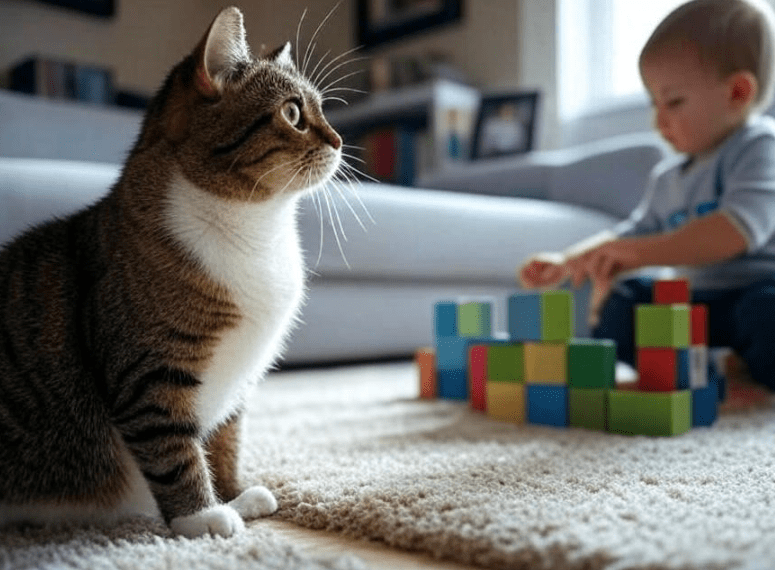
1.Personality and Socialization
Early socialisation between domestic shorthairs and children strongly affects their ability to get along. The longer a Domestic Shorthair cat meets many different children while young the easier it will be for them to live with kids. Ask about the Domestic Shorthair’s interaction history with children when you get it from a shelter or rescue. Animals that made good first contact with children tend to remain at ease at home with the entire family.
Study how the cat acts in multiple surroundings during your evaluation. Some Domestic Shorthairs are content to relax while others need activities to stay busy. Your assessment of how well a cat handles energetic interactions helps you see if it will fit easily into your home environment.
2.Age of the Cat
The younger a cat is the more energetic it usually becomes and enjoys engaging in play activities with children. Such cats may become fatigued too quickly when exposed to continuous stimulation. As senior cats tend to stay calm and tend to avoid rough games they require peaceful surroundings to feel content. Young active children should choose between a young Domestic Shorthair kitten or young adult. An adult cat matches well with older children who need a composure level in their daily life.
3.Health and Well-being
A cat’s medical condition determines its behaviour. A cat in pain or discomfort dislikes the energetic activities children naturally do which makes it less patient with their actions. Take the pet to routine veterinary visits to confirm that the cat remains healthy so you can better handle its behavior. A healthy pet will show natural personality traits first while medical tests help determine true behavioural problems.
4.Previous Experiences with Children
The Domestic Shorthair will adapt better to a house with children based on past living experiences. The experience helps when bringing the cat into homes with children because familiar settings help reduce adjustment stress.
Best Practices for Introducing a Domestic Shorthair Cat to a Child
Cat owners must prepare carefully to bring their Domestic Shorthair into contact with children. A gradual introduction period protects both the cat and child so they can form good bonds together. These steps will help you introduce your Shorthair cat to your family successfully.
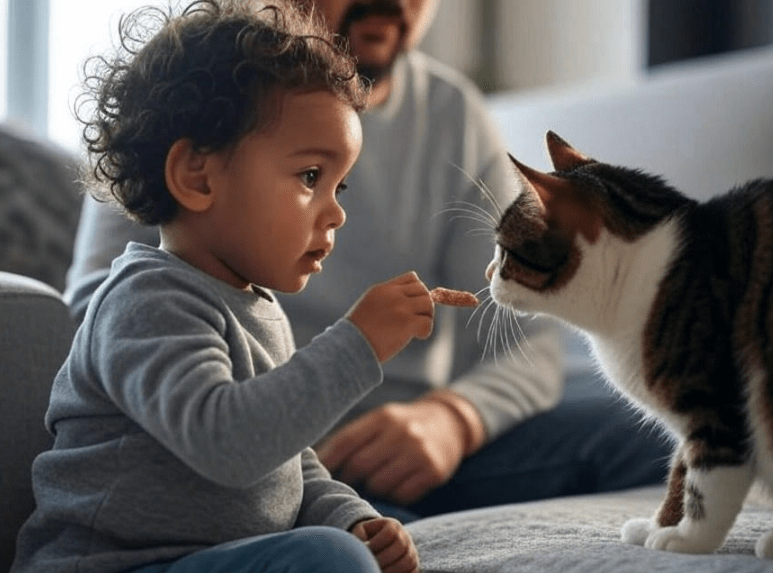
1.Create a Calm Environment
Make a quiet setting at home before bringing the cat inside. New cats normally feel uncomfortable with unfamiliar home environments. Students must move closer to their new cat gently and show respect until it can adapt to the household environment. Keep gentle human contact low during the first days to help the cat adjust comfortably.
2.Allow the Cat to Explore
Permit your Domestic Shorthair cat to search its new surroundings freely during this transition process. Wait for the cat to naturally accept interactions with children. Let your Domestic Shorthair choose a peaceful place to watch the home while it gets familiar with everyone in the family.
3.Supervised Initial Interactions
A parent should stay nearby during the beginning steps of letting their child get to know the cat. Our assistance helps both the child and the cat form positive behaviours through gradual contact. Teach your child to handle cats with care because new settings make them easily spooked.
4.Short, Positive Sessions
Start by allowing children to engage with the cat for brief periods. Allow your child to play comfortably with the cat by letting it chase toy tendrils or soft objects. Keep your time with cats shorter until your cat grows used to its new companion. Both the cat and child will form stronger connections if you reward them through treats or positive feedback.
Tips for Keeping Interactions Safe and Stress-Free for Both Cats and Kids
After letting your Domestic Shorthair cat settle into the home and showing children their proper pet interactions you need to keep this harmonious balance. These steps will help keep the cat and children pleased during their time together.
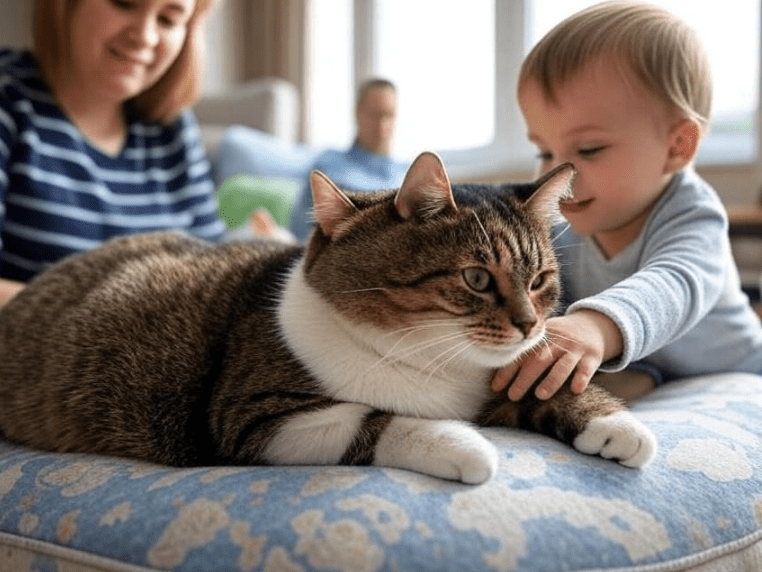
1.Set Clear Boundaries
It is important to define how the children and cat should behave within their space. Teach your children which areas are protected for the cat to rest at such as its bed, food spot or its litter box and teach them not to interrupt the cat while it stays there. Teach your children they should hold the cat only when the feline shows receptiveness to being picked up.
2.Respect the Cat’s Body Language
Children need training to identify when a cat shows signs it feels uneasy. When cats display hissing and swatting with back-stepping movements they clearly want to stay at a safe distance. When children learn to spot these signals they will stay safe during interactions with the cat.
3.Teach Gentle Handling
Teach children to handle the cat softly through all touch instances. Demonstrate to children the right methods of petting their cat on its back or behind the ears. Teach them to avoid those parts of the cat that may cause pain including the tail and paws.
4.Supervise Playtime
An owner should watch their Domestic Shorthair cat’s play sessions to confirm that activities remain soft. You should end the session when your cat displays signs of stress because it needs time to rest. Teach your child to end play when the cat displays signs of tiredness or discomfort.
5.Provide Quiet Time
Domestic Shorthair cats need moments of relaxation to stay healthy. Give your cat areas to rest in which are protected from disruptions when it feels overstimulated.
The Importance of Respecting Boundaries and Teaching Children How to Handle Cats
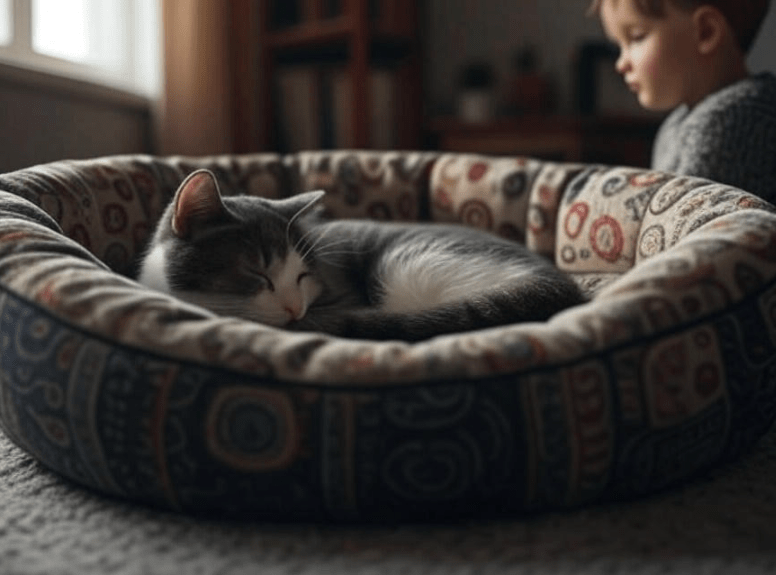
Setting proper space helps both the cat and the child feel safe and secure. The way cats show their needs and wants teaches children both safe behaviour with these pets and helps them form stronger bonds.
Teaching children to respect animals and understand their needs builds essential character traits that will make them caring adult citizens. Your child needs to understand that like people, cats have specific requirements and personal feelings about life. When you train your Domestic Shorthair cat correctly it will join your family as a trusted friend.
Conclusion

Can a Domestic Shorthair cat relate well to children at home? Absolutely! These domestic shorthaired cats create excellent bonds with families because they are friendly social and flexible companions. Taking proper care to socialise your Domestic Shorthair cat and keeping boundaries will lead to successful interactions with children. The recommendations in this article help you develop a secure bond between your family’s feline and human members.
